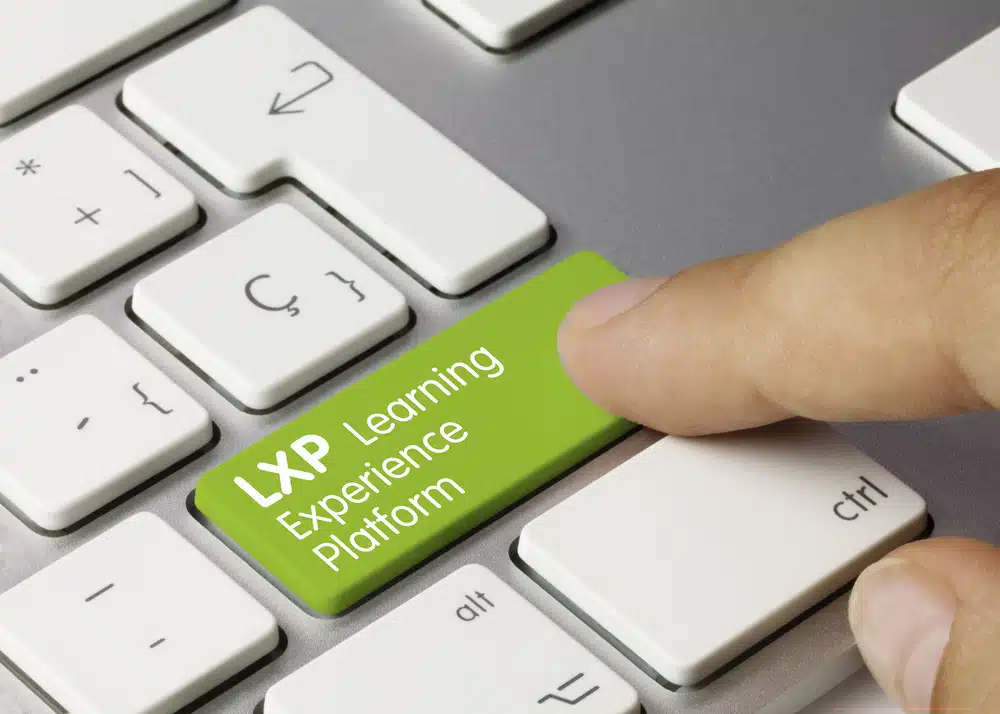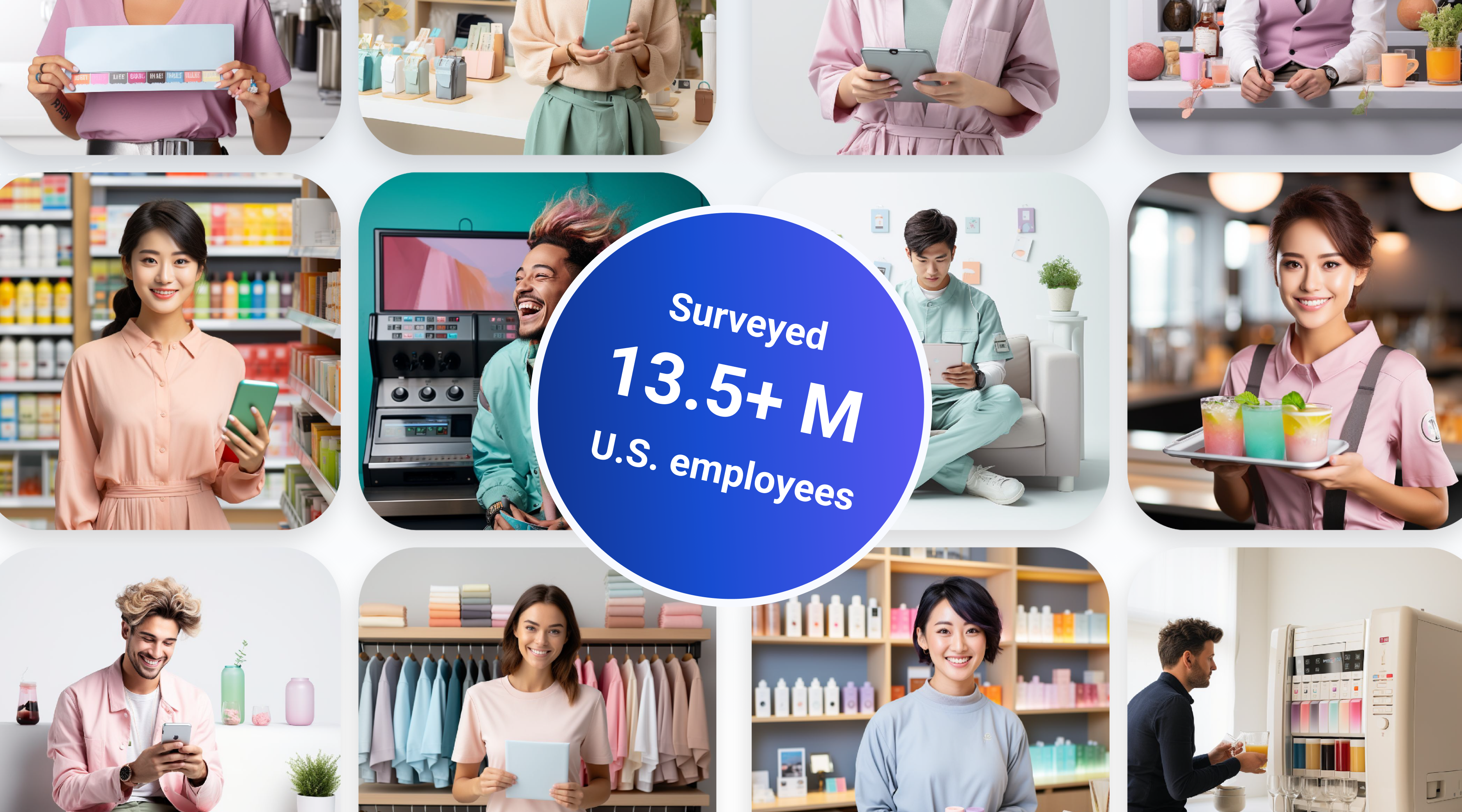Whether it’s B2B, B2C, SaaS, PPC or SEO, the field of business-related learning development is full of acronyms and tech jargon. And that’s before we get into the similarly-named, similarly-focused-but-different Learning Experience Platforms (LXPs) and Learning Management Systems (LMSs).
For Learning and Development (L&D) professionals, differentiating between these two solutions can be tricky. Here’s a quick guide to help you differentiate between using an LXP vs LMS, helping you to select the platform that best aligns with your specific learning objectives and guide your employees’ development.
The Strengths of Learning Management Systems (LMS)
Think of an LMS as almost like a professional bodyguard, safeguarding your formal training programs with a meticulously organized library housing instructor-led courses, eLearning modules, and certification programs.
LMSs are best suited for:
- Streamlined user enrollment and completion tracking: No more scrambling to track who’s enrolled or might be lagging behind. LMSs streamline the enrollment process, making sure that everyone is on the same page. Solid completion tracking features also give you highly valuable insights into the effectiveness of your program, allowing you to identify areas for improvement.
- Assessment delivery: Assessing knowledge retention is crucial for measuring the impact of your training initiatives. LMSs have a variety of built-in assessment tools, including quizzes and tests to simulations and practical exercises. This allows you to gauge how well your online training translates to real-world application.
- Compliance training management: Whether it’s adhering to evolving legal regulations or ensuring industry certification compliance, LMSs streamline the delivery and management of mandatory training programs. This ensures your workforce remains compliant, mitigating potential risks and legal headaches.
The Strengths of Learning Experience Platforms (LXP)
LXPs are a huge shift in the way that corporate learning used to be done, transforming training from a one-size-fits-all approach into a more personalized and engaging experience. Here’s how:
- Dynamic content libraries: Imagine a learning environment that updates and changes. LXPs curate content from a range of sources, including user-generated content, providing a more dynamic learning environment, offering a treasure trove of valuable resources beyond traditional (and more static) course catalogs. Think bite-sized video tutorials, industry expert interviews, and peer-generated knowledge repositories, all at your fingertips.
- Personalized learning: Learning journeys shouldn’t be rigid roadmaps. LXPs have sophisticated algorithms to personalize and adapt content recommendations, suggesting learning paths tailored to each learner’s unique needs and interests. This allows for deeper engagement and a sense of ownership over the learning process.
- Social learning and collaborative engagement: LXPs are more than just content repositories. They foster a culture of knowledge sharing and collaboration by incorporating features like discussion forums, social learning opportunities, and gamified elements, transforming learning from a solitary activity into a dynamic, interactive and more social experience.
LXP vs LMS: A Quick Comparison
Now we’ve gone through the differences between LXP vs LMS systems, here’s a quick comparison table:
| Feature | LMS | LXP |
| Focus | Formal, structured learning | Informal, continuous learning |
| Content curation | Admin-controlled course library | User-generated & curated content library |
| Learning approach | Push-based (assigned training) | Pull-based (self-directed learning) |
| Reporting | Compliance & completion tracking | Progress, engagement & skill development |
Choosing the Right Platform For Your Strategic Objectives
When it comes to choosing whether to implement learning experience platforms vs LMS, the one thing you need to take into consideration are your specific L&D priorities.
Two questions you might want to ask yourself before implementing either system:
- Compliance: does your organization and your employees need to follow any regulatory frameworks or have any other legal considerations? If so – an LMS if your best fit. Its structured approach, assessment and tracking features guarantee everyone’s on the same page and equipped with the necessary knowledge.
- Does your organization prioritize upskilling employees? If so, an LXP might be the best fit. Its personalized learning paths, dynamic content libraries, and collaborative features empower your employees to take charge of their own development.
Workforce Development and a Synergistic Approach to LXP vs LMS
If you’re thinking that your organization would benefit from both LMS/LXP systems, you’d likely be correct, and you shouldn’t have to limit yourself to just one solution.
Your LMS would provide a strong foundation for core training programs. For example, new hires at a healthcare institution could utilize an LMS to complete mandatory compliance modules on safeguarding patients.
Simultaneously, the same LMS could integrate seamlessly with an LXP. This LXP could offer personalized learning paths, recommending industry-specific webinars, curated articles, and even microlearning modules on the latest healthcare technology trends. This combined approach ensures employees grasp the fundamentals while empowering them to continuously hone their skills and stay ahead of the curve.
Real-World Applications: LXP vs LMS and You
But how do LMS vs LXP stack up in real life?
They can and should work together seamlessly. For example, imagine a large retail chain onboarding a wave of new employees. An LMS would be ideally suited to deliver essential training modules and company policy courses, ensuring all new hires have a strong foundation for their success. This could include modules on customer service best practices, product knowledge, and workplace safety protocols.
However, the learning journey shouldn’t end there. An LXP could be integrated into the system, offering personalized recommendations for additional training based on individual roles. For example, a cashier might receive recommendations for video tutorials on handling difficult customer interactions, while a store manager might be directed towards leadership development courses and industry reports on best practices in retail management.
Both systems either working together or incorporating aspects of one another creates a culture of continuous learning and empowers employees to take ownership of their professional development.
The Evolving Landscape of LXPs and LMSs
As technology continues to evolve, so too will LXPs and LMSs. Imagine AI-powered platforms that personalize learning paths to even greater levels, offering bite-sized learning modules tailored to individual learning styles and preferences. Think interactive simulations, gamified learning experiences, and more.
And for an interactive learning experience with all of the above features, Bites has everything you need in an LMS system.
Choosing the Right Platform for Your Needs
The choice between an LXP and LMS isn’t a zero-sum game. By understanding the strengths and weaknesses of each platform, and aligning your selection with your specific L&D goals, you can give your employees a truly engaging learning experience.
Bites provides you with dynamic learning experience for your employees, making training easy to create, effortless to share, and delivers fast onboarding at an affordable cost.



















